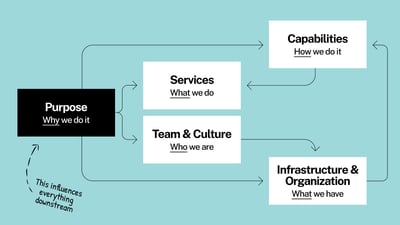Some of the Biggest Mistakes Nonprofits Make in the Strategic Planning Process

With the amount of time, thought, and expense that many nonprofits put into their strategic planning process, the last thing they’d want is for it to be a wasted effort.
Yet, unfortunately, a variety of mistakes can creep into the process to make their strategic planning less than usable.
Let’s take a look at some of the more prevalent issues.
The Strategic Plan is Too Generic
A generic plan may result from too vague of a nonprofit’s mission statement or vision statement. “Ending world hunger” or “Eradicating homelessness” provides little guidance when it comes to an organization’s realistic objectives.
Equally unhelpful are generalized long-term goals like “Growing our revenue” or “Improving our programs.”
Other factors contributing to a generic strategic plan include cookie-cutter solutions adopted from other nonprofits, ambiguous timelines, a rudimentary SWOT analysis, nonexistent key performance indicators (KPIs), and unclear audience definitions.
Lack of an Actionable, Realistic Plan
A strategic plan for nonprofits should be a practical, actionable guide for accomplishing primary goals. To me, this means having a bias for action over documentation, with the plan consisting of realistic, common-sense steps.
Yet, I’ve seen many nonprofits whose strategic plan extensively documents the decision-making process, but strangely omits a clear methodology for achieving stated goals.
It’s like a map showing two cities with all of their demographics, but lacking driving instructions from one to the other.
The Impossible Wish List
Sometimes, a strategic plan consists of a haphazard jumble to accomplish, an eclectic list of things that various stakeholders want to see done.
But even if the strategic planning features realistic goals that result from a well-reasoned process, often there are just too many of them.
Either way, numerous targets make for an unachievable endeavor and risk personnel burnout. An organization should have one, big audacious goal with no more than three strategic objectives to accomplish it.
Let’s say your goal is to reduce hunger in your area by 50 percent. Your three strategic objectives could include: (1) partnering with local farmers on ways to increase crop yields at no additional cost, (2) working with governments and NGOs to establish food banks, and (3) advocating for corporate policies that reduce income inequality.
Absent Buy-In and Ownership
For a strategic plan to truly work, there must be buy-in throughout the entire organization, and not just by the board or funders. You can expect only a half-hearted effort from an executing team (whether paid staff or volunteers) that doesn’t embrace the plan’s overarching goal.
Once you have that buy-in, there needs to be clear ownership of the objectives required to achieve the goal.
Without ownership, objectives tend to drift without urgency in a timeless sea, so to speak, rendering the strategic goal unattainable.
Thus, it’s imperative to assign each objective to a particular individual. If done right, there’s plenty to keep that person busy wrangling just one objective. They must:
- Have the empowerment to make decisions
- Develop specific, measurable, and time-bound steps to be taken
- Assign those steps to specific team members
- Regularly monitor KPIs critical for achieving the objective
- Evaluate the effectiveness of the tactics being used and course-correct if necessary
No Flexibility to Adapt to a Changing Environment
The nonprofit landscape is always evolving. Organizations that are not agile and adaptable may find themselves struggling to keep up or remain relevant.
For example, as more and more donors prefer mobile communication, nonprofits failing to use SMS messaging or to optimize phone-friendly donation pages are leaving money on the table.
Likewise with social media, nonprofits that don’t use it to share their stories, broadcast impact updates, and connect with a wider audience find themselves at the tail end of donor interest.
This is equally (and perhaps particularly) applicable when it comes to the strategic planning process.
Shifts in staff leadership, changes in the funding climate, new laws and regulations, rapid or sudden growth, emerging opportunities or community needs—anything can happen to throw a big wrench into a strategic plan.
Certainly, it’s important to cast a vision of where you want to be in, say, three years. But that doesn’t mean you need to spend three to six months developing a perfect plan for those three years—especially given that the plan will become obsolete sooner rather than later.
Instead, we favor a new, actionable strategic plan every year, one that you can create in three weeks and adjust throughout the year as needed. It remains current, pertinent, and doable.
In short, there are plenty of ways for mistakes to creep into the process of creating your nonprofit strategic plan. But there’s one good way to make sure they don’t. Just contact CauseMic to help with your next plan!





